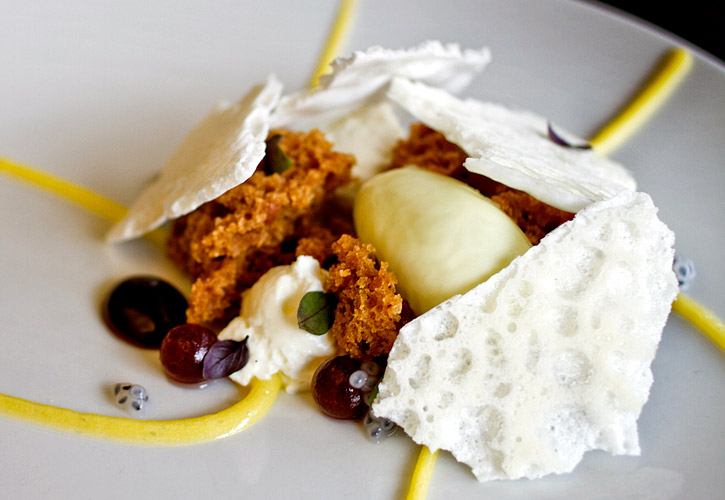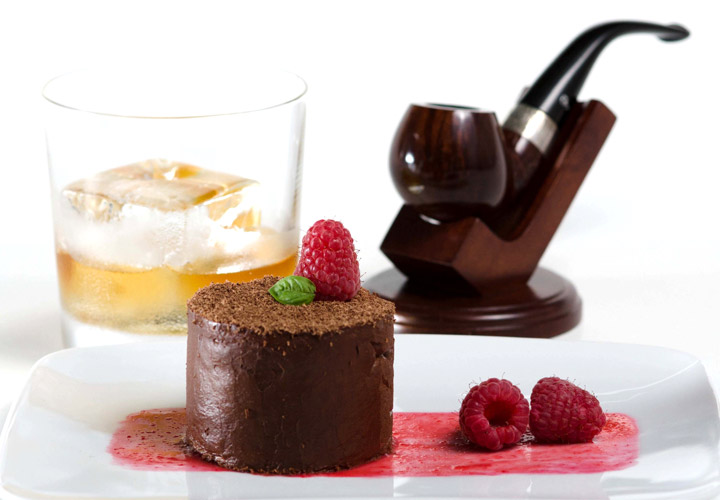Foam Types
As we've already mentioned, there are many types of foam. Even the protective padding in a bicycle helmet is a type of foam. Here, though, we'll just cover the most common culinary foams, starting with the most solid.
Meringue (Dehyrdated foams)
Meringues are made by first creating a traditional liquid foam, usually with fresh egg whites or egg white powder, then dehydrating the finished foam in a dehydrator or oven with very low temperature. The result is a crunchy, fluffy confection that will keep its shape indefinitely. Similar egg white folding techniques are used to give other pastries, like cookies and cake a fluffy consistency.

Solid foams (Bread/Cake)
Similar to dehydrated foams, solid foams trap air within a solid, usually some type of flour. In traditional breads, the trapped gas is usually carbon dioxide: yeast and baking soda added to the bread dough react with acids and sugars to produce carbon dioxide as the bread is baked. In the below recipe of black sesame miso sponge cake, we have instead aerated the flour with an iSi whipper. The result is the same, though the technique is different.

Mousse (and other set foams)
Mousses are technically foams suspended in a liquid. The difference, however, is that the liquid has been gelled---that is, given enough structure to appear solid at serving temperature. In the below recipe for chocolate mousse infused with pipe tobacco, gelatin combined with whipping cream (which usually also contains the gelling agent carrageenan) gives the mousse the structure to stand up on a plate.

Dense foams
Dense foams are essentially foams suspended in a liquid that do not contain enough gelling agents to appear solid at serving temperature. Below is a perfect example of this concept. This Jerusalem artichoke foam is served as a soup. Although it contains similar ingredients to a mousse, the end result is a very different dish.

Light foams
Although many chefs try to recreate the creamy and dense texture of a whipped cream when making dense foams, sometimes a lighter approach is important. Dense foams traditionally get their creaminess from milk fat; modern versions can substitute it with thickeners like xanthan gum. In the below elderflower foam, neither fat nor thickeners make an appearance. The foam is created using only gelatin and the result is a light but stable foam that pairs perfectly with champagne.

"Airs" and espumas
What is the essence of flavor without texture? That's the question that modernist chefs have asked and its the question that led to the development of the extremely light foams known as "airs." The term "espuma" simply means foam in Spanish. To create airs such as the Wasabi air over seared Tuna below, chefs use only pure soy lecithin, an emulsifier that has no thickening or gelling properties. The result is a product that has no more body than water.

By Kevin Liu





